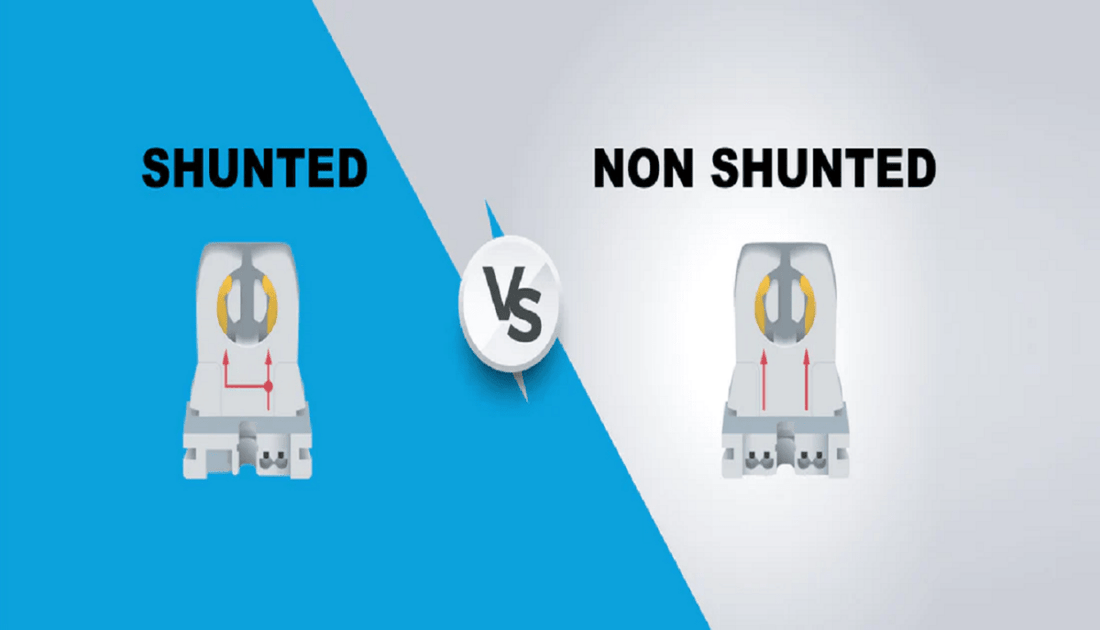LED tubes are tricky. The fixtures in which these tubes fit are tricky. The number of parts and the technical aspect of these LED tubes makes them a difficult decision to make. Especially with the complexity of a tombstone, it becomes even more complicated to properly understand how LED Tube Lights work.
A mistake in buying the right kind of support fixture can cause a short circuit in your LED tubes resulting in being a tombstone for your lighting, literally.
This is why we have come up with this post to explain the A to Z of choosing the right type of tombstone for your LED tubes.
What is a shunted and a non-shunted tombstone
To understand how to pick the right tombstone, we first need to understand what are these and what purpose they have in the functioning of LED tubes.
- What is a tombstone: Also known as bulb holders, tombstones are the terminals of the lighting fixture through which the light gets electricity. This is the component that connects the light to the electric supply.
- What is a shunted tombstone: A shunted tombstone has two pins, live and neutral but these pins are connected with each other.
This means that the current flows throughout the circuit even when the fixture is not installed in the socket.
- What is a non-shunted tombstone: A non-shunted tombstone is similar to a shunted one but the pins of this tombstone are not connected to each other.

So the circuit is completed when the light is installed in the socket and only after that the electricity starts flowing.
The main difference between a shunted and non-shunted tombstone is how the electricity flows through them.
How to tell which tombstone you have
Now that you know the difference between the two sockets, we will now learn how to pinpoint which is which.
The visible difference from the outside among the two is that a shunted tombstone will have two holes for the wiring and the other one will have four holes for wiring.
However, this is not the ultimate tombstone test. The best way to know with absolute certainty is to use a voltage meter. Connecting the two pins of a shunted socket will produce a light ring in the meter which represents a flow of electricity.
While the same voltage meter used on a non shunted tombstone will show no ‘continuity’.
This is the litmus test of shunted vs non shunted tombstones.
The last thing which remains to be understood is where each of these tombstone find their application.
Shunted or non shunted tombstone? How to choose
The answer to this question depends on whether you are buying a new fixture or you are replacing the tube/bulb in your existing fix
As a thumb rule, direct wire led tubes use a non shunted tombstone. In a T8 replacement case, bypassing the ballast may be required which makes it mandatory for a non shunted tombstone to be used.
Using ballast compatible LED tubes is preferred as otherwise you would not only be compelled to change the tombstone but will also have to bypass or remove the ballast.
Since this decision can impact the life of your LED fixture, it is important for you to choose wisely. And wise decisions come with knowledge. When you make informed decisions, you not only ease up your life, but also ensure that you get the most value for your money. Making the right choice with your tombstone will definitely help you achieve that goal.
How to replace shunted with non-shunted tomestones
Replacing shunted with non-shunted tombstones requires careful handling and attention to detail to ensure safety and proper installation. Shunted tombstones have a metal jumper that connects the two sockets, while non-shunted tombstones have separate sockets that do not have any connections between them.
To replace shunted with non-shunted tombstones, the first step is to disconnect the power supply to the fixture. Then, remove the old shunted tombstones and wires, and clean the area where the new tombstones will be installed. Next, install the new non-shunted tombstones by connecting the wires to the corresponding socket and tightening the screws.
It's essential to ensure that the wires are securely connected, and there are no loose connections or exposed wires. After installing the new tombstones, reconnect the power supply and test the fixture to ensure it's working correctly. It's important to follow the manufacturer's instructions and safety guidelines when replacing tombstones to avoid any electrical hazards or damage to the fixture.

















































































2 comments
Please include the method t0 to replace shunted with non-shunted tomestones
I’ve learned something today, I’m going home!